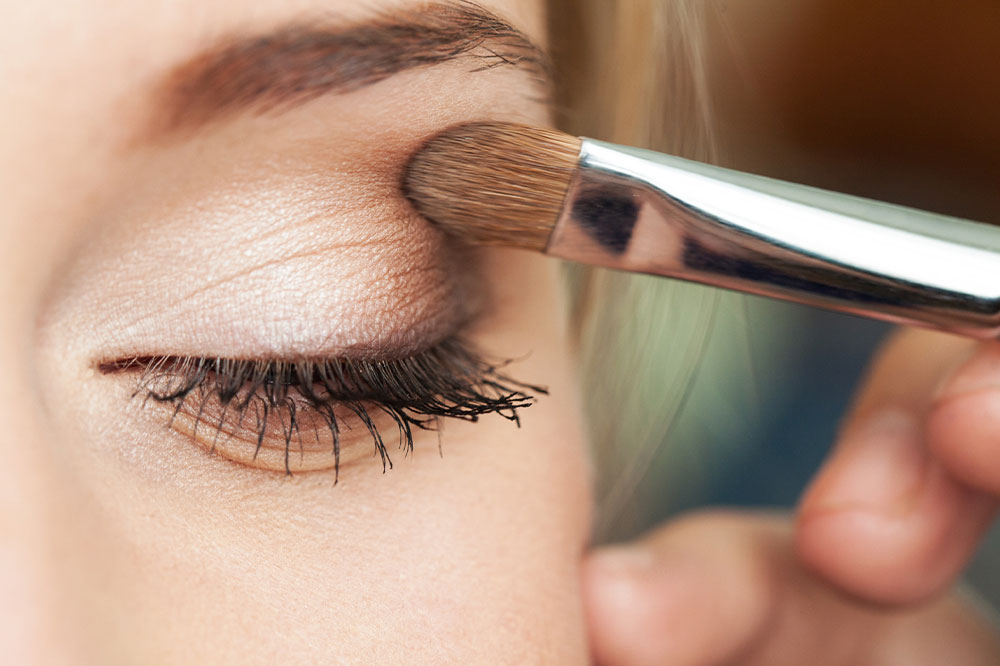8 common makeup application mistakes to avoid

Makeup is an important part of many people’s daily skincare routines. Several factors, like skin type, natural aging, and even personal preferences, influence the choice of daily makeup. While one can get creative and try different products, it’s essential to apply them correctly. People sometimes make mistakes when applying makeup, which spoils their appearance and wastes a lot of time. Being careful when using makeup can help achieve a flawless look.
1. Face wash mistakes
Overwashing the face makes the skin dry as water and soap remove all the natural oils and minerals from the skin’s surface. As a result, the skin becomes dry and flaky upon applying makeup. While washing the face before applying makeup is necessary, one must not overdo it. One must scrub the face with a gentle cleanser once in the morning and once at night before bed. Hydrating the skin with a moisturizer or serum before applying foundation is also necessary. These are the first steps before applying a layer of makeup.
2. Using the wrong foundation
With age, the skin loses its natural radiance and dries up, making it difficult to use the same foundation base that worked earler. Skincare specialists suggest applying a matte-based or powder foundation after thoroughly moisturizing the surface. This is because natural aging is one of the biggest factors to consider when using foundation – the skin is naturally light and supple during the early 20s, meaning makeup is not always necessary.
3. Applying makeup without proper lighting
Setting up boutique lights in the bedroom is not necessary. But ensure the area around the dresser and mirror is well-lit before applying makeup. Makeup shades look different in different lighting conditions, so ensure uniform lighting to apply an even coat on both sides of the face. Without lighting, it is easy to miss a dark spot or apply too much makeup in one area without balancing the shade on the opposite side. Experts recommend natural lighting as sunlight provides the best conditions for applying makeup evenly. So, move the dresser and mirror setup to a well-lit window in the corner of the room. Alternatively, consider adding a few extra white LED lights around the dresser area to improve the luminance.
4. Avoiding primer
Skin aging is inevitable, and it’ll only be a matter of time before the fine lines start showing up on the surface, even after applying makeup. Adding a layer of primer where the age spots tend to show will prevent these fine lines and wrinkles from ruining an after-makeup look. Primers help smoothen the skin and fill all the spots where the makeup can seep into the uneven grooves. Different formulations of primers are available for various skin types, such as dry, oily, combination, aging, and sensitive skin. When shopping for these products, it’s essential to consider the intended use and select accordingly.
5. Concealer application mistakes
There’ll always be some dilemmas when using makeup products for the first time. What comes first, the foundation or the concealer? While logic dictates it’s better to use concealer first to hide skin imperfections, many first-timers misapply it.
- Applying too much concealer will only highlight imperfections and make a person look older. So, start with a few dots to see how the concealer blends into the skin, then add layers.
- Applying the wrong concealer color can ruin one’s natural look. For example, light cream-toned concealers are suitable for hiding dark circles. Green-toned concealers are excellent for hiding blemishes and pimples that stand out from the skin.
- Use tinted concealers first to hide skin imperfections, and then add another layer that matches the skin tone perfectly.
6. Applying makeup with fingers
It is best to avoid applying makeup with the fingers as they can contain bacteria, dirt, and debris that can quickly transfer to the face and lead to an infection. Although some use their fingers to save time during their morning routine, this method is flawed and can harm the skin. Instead, it is recommended to use a high-quality makeup sponge that is slightly damp to apply makeup evenly. Keeping several sponges in the makeup kit is advisable to replace dirty ones with clean ones quickly.
7. Using a dark shade of eyeliner
Eyeliners give that extra oomph factor, mainly when appropriately applied. But it is important to check what color and shape works best for the eye line. Try it at home several times before venturing out with the new eyeliner color. Check if the shade blends well with the existing makeup in proper lighting. Don’t just use a product because it’s currently in trend. Eyeliner mistakes are visible clearly and more so in close proximity. If needed, switch to a shade of mascara instead of eyeliners or consider using brown eyeliner instead of bold black color.
8. Forgetting basic skincare
Even after applying all the right makeup products, there are some basic skincare tips to continue following every day.
- Always use quality cleanser and moisturizer before applying the base layer of makeup.
- Cleansing exfoliates the skin and removes dead cells to provide an even layer for makeup.
- Moisturizer hydrates the skin and prevents internal cell damage.
- Applying makeup products with SPF protection is also a good idea in climates where UV ray damage is a looming threat.
- Follow a skincare routine and find the best practices for applying makeup. It’s only possible to find the best products by trial and error the first time.
If there are any side effects or sudden flare-ups after using new makeup products, immediately consult a skincare specialist.


